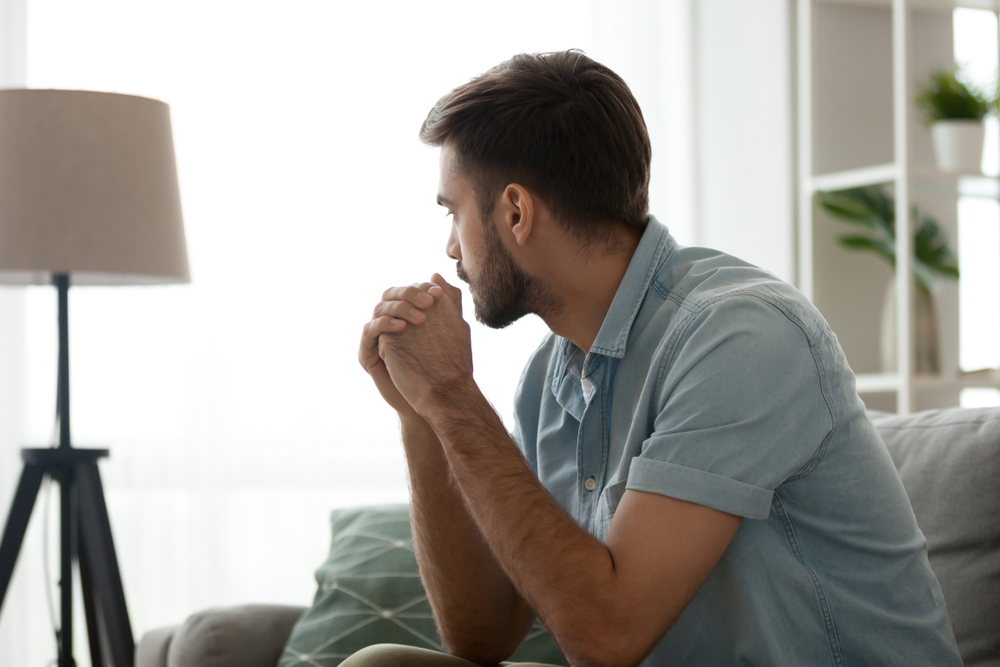Anxiety evolved as the body’s alarm system to react quickly to perceived dangers. When faced with a stressful or risky situation, you instinctively go into a state of high alert. Your heart rate speeds up and your breathing becomes shallow, while your muscles tense and you start sweating.
Typically, this fight-or-flight response will subside on its own once the threat has passed, allowing your nervous and limbic systems to return to baseline levels. However, specific mental health conditions – including anxiety disorders and PTSD – can make you feel anxious, tense and nervous almost all the time, even when there’s no obvious trigger.
Do You Have Daily Anxiety?
People living with generalized anxiety disorder and PTSD experience daily fears and worries that are out of proportion to their circumstances. These conditions make it difficult or impossible for you to fully relax. You may experience frequent stomachaches, trouble sleeping and muscle aches and pains resulting from holding tension throughout your body. You might also startle or jump at the slightest sound.
If you are anxious every day, you probably share the same fears and worries other people do, but at a much higher level. You always imagine the worst-case scenario in a world that seems dangerous and unforgiving. Sometimes, everyday activities like driving and grocery shopping feel overwhelming, leaving you sweating and shaking. You go through most of your days filled with unreasonable dread.
When you have chronically high anxiety, you also have no control over the negativity running through your mind in an endless cycle. At this point, it can become disruptive and distract from your daily routine. If you are always upset and struggling with intrusive thoughts or nightmares, you may self-medicate with drugs and alcohol to find relief. Unfortunately, if you develop a co-occurring substance use disorder, it will make your mental health symptoms worse.
Healthy Ways to Stop Feeling Anxious for No Reason
No matter how hopeless or out of control your situation might feel, you can break the cycle, learn grounding techniques and regain your sense of hope.
1. Find a Therapist
A professional therapist is a person you can feel comfortable talking to without worrying that they will judge, criticize or interrupt you. Explaining why you feel anxious and how it’s affected your life can help with the loneliness and isolation that often accompany anxiety disorders and PTSD. Cognitive behavioral therapy is an approach that has proven especially beneficial for people who struggle with daily anxiety because it teaches you how to change negative or self-defeating talk.
2. Meditate and Practice Breathing Exercises
Meditation and controlled breathing are two of the best all-natural ways to manage anxiety and slow down your racing thoughts. When you feel panicky and need to calm down quickly, you can close your eyes and focus on taking slow, deep breaths that fully engage your diaphragm. If you like, you can even repeat a calming or self-affirming phrase like “I deserve happiness.”
3. Exercise
Often, worrying is counterproductive, draining your mental and emotional energy without resulting in any concrete problem-solving strategies. You can occupy your mind and body with exercise instead. A daily workout will relieve muscle tension and release feel-good chemicals called endorphins, which cause the well-known “runner’s high.” For maximum benefit, add a mindfulness element by focusing on your form as you move.
We’re Always Here for You
Hope by the Sea is a family-owned Southern California addiction treatment center that has become a haven for hundreds of people. Our specialty tracks include multiple levels of care specifically designed for military veterans and their families, executives, Christians and young adults. Call us today to learn about receiving dual-diagnosis treatment designed specifically for your unique needs.

